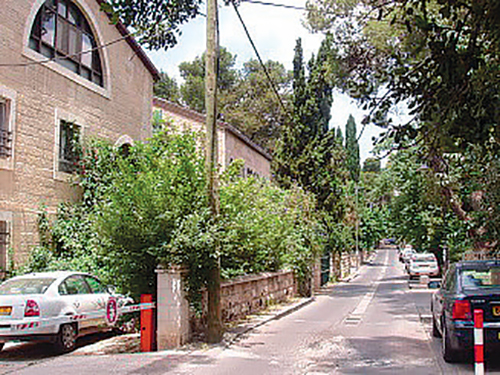

The German Colony is an exciting and upscale Jerusalem neighborhood. It is famous for its main thoroughfare, Emek Refaim, which is one of the city’s most popular streets, bustling with activity and boasting cafes, restaurants, and trendy boutiques.
The German Colony is centrally located, bounded by the old train station to the north, the Greek Colony to the south, Derech Beit Lechem to the east, and Old Katamon to the west. It is walking distance to the city center and a short walk to the Old City.
The German Colony was established in 1872 by members of the Temple Society, a German Protestant sect of the Lutheran Church. The Templers purchased a large tract of land situated in Refaim Valley southwest of the Old City—which at the time housed almost all of the city’s population—and built a colony similar to villages in Germany. The community was comprised of one- and two-story farmhouses with green shutters, red tile roofs and fenced-in gardens, using local Jerusalem stone instead of the traditional wood and brick materials.
The German Templers lived in the neighborhood until the middle of World War II, and in 1943 the British government deported the Templers as enemy aliens and Nazi sympathizers. In 1948, the German Colony became home to new olim and quickly became a prominent community due to its prime location coupled with its attractive homes and lush greenery.
The neighborhood received a big development boost in 1892 when the city’s main railroad station was constructed next to what is now Liberty Park (Gan Hapa’amon). The railroad station was used for over a hundred years until it finally closed in 1998, at which point the city’s main train station was relocated to Malcha, near the well-known Malcha Mall. Recently, the old train station was given a new lease on life when it was renovated and renamed “First Station.” It has become a hub of cultural and recreational activities, as well as the home of countless fine restaurants.
After the state of Israel was established, the neighborhood was renamed Rambam in memory of the preeminent philosopher and scholar Maimonides, but—as was the case with a number of Jerusalem neighborhoods such as Baka, whose official name is Geulim, and Katamon, whose official name is Gonen— the new Hebrew name was never accepted by the public. Today, the neighborhood is called “Hamoshava HaGermanit” or “Hamoshava” for short.
In order to preserve the German Colony’s charm, in 1973 the neighborhood was declared a historical site. This landmark designation limited the ability to destroy the older buildings, and as a result, many of the original homes have been restored, which has helped retain the community’s unique character.
Because of its proximity to numerous cultural and religious institutions and holy sites, the German Colony has become a magnet for Jews from all over the world—especially English-speaking families—who desire a sense of community and also want to take advantage of the myriad cultural, religious, and social opportunities in the vicinity. The neighborhood is comprised of people of all ages, including lots of young families, but seniors in particular appreciate the German Colony’s flat terrain, which stands out in a city that is comprised of many hills.
Gedaliah Borvick is the founder of My Israel Home (www.myisraelhome.com), a real estate agency focused on helping people from abroad buy and sell homes in Israel. To sign up for his monthly market updates, contact him at gborvick@gmail.com.
By Gedaliah Borvick











